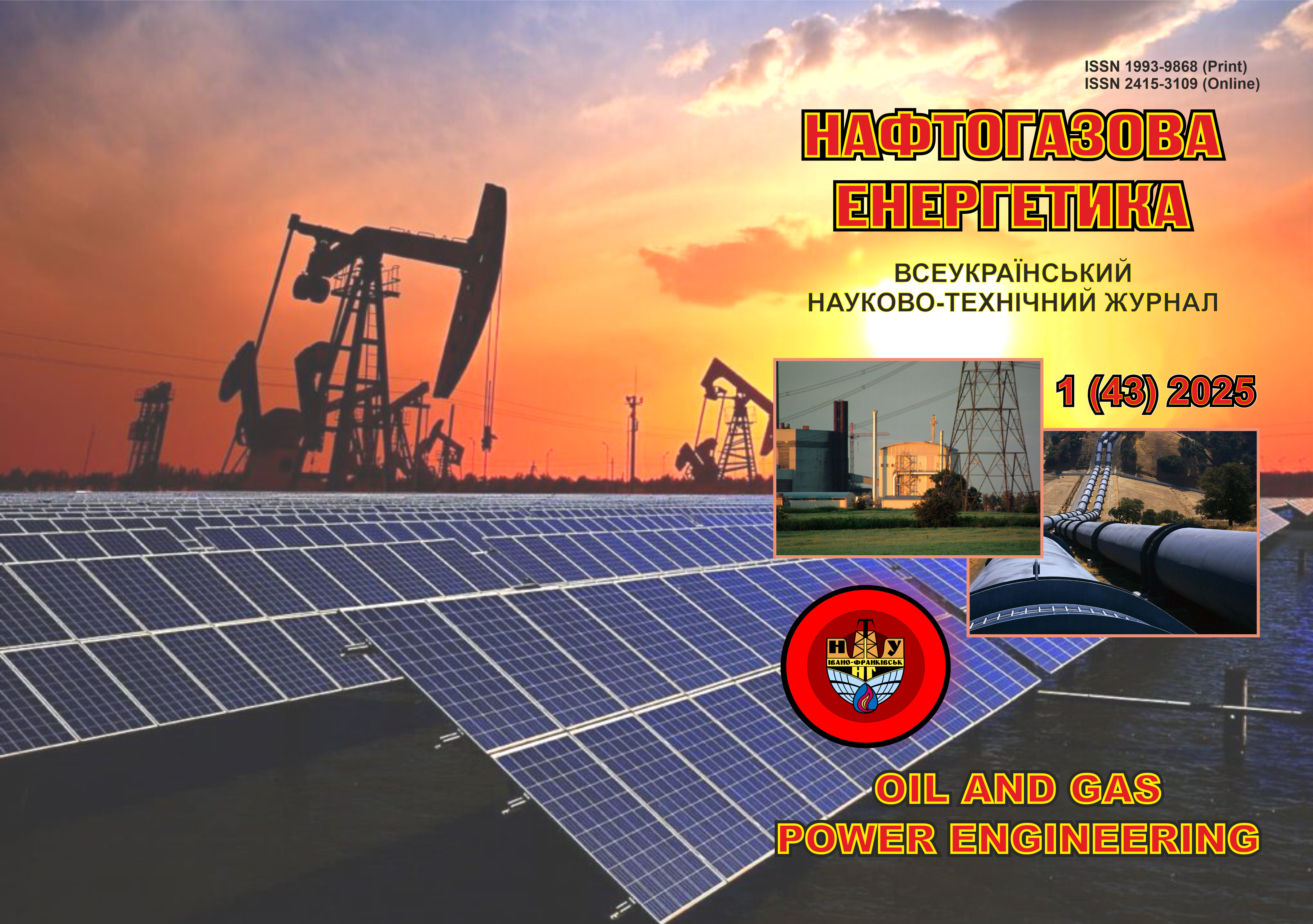MODELING OF THE WORKING PROCESS OF THE ABOVE-BIT BALL VIBRATOR
DOI:
https://doi.org/10.31471/1993-9868-2025-1(43)-62-70Keywords:
vibration-rotational drilling; destruction of rock; dynamic action on the outcrop; ball vibrator; simulation modeling; coefficient of hydraulic resistance.Abstract
On the basis of simulation modeling using the Solidworks Flow Simulator program, the hydraulic characteristics of the overbit ball vibrator designed to increase the efficiency of well deepening when drilling in rocks of a higher strength category were studied. The ball vibrator consists of a spherical working body placed in the channel of the saddle, the vibrations of which are transmitted to the rock-destroying tool and the rock under the action of the oncoming flow. Superimposition of dynamic pulses created by the vibrator on the rotary movement of the bit increases the efficiency of rock destruction. The calculated volume of the 3D model of the device is limited by the planes drawn through its input and output sections. The boundary parameters of the calculation model are taken in the form of pressures on the boundary surfaces of the ball vibrator, taking into account the flushing mode and well structure. After dividing the 3D model of the device into calculated finite elements, the distribution diagrams of velocities and pressures in the flow part of the ball vibrator were obtained for six values of the flow rate of the washing solution, which varied in the range from 0.003 m3/s to 0.017 m3/s. The conducted studies established that due to the deformation of the flow in the gap between the vibrator ball and the inner conical surface of the saddle, an annular submerged jet is formed, which closes behind the spherical working body of the device. Wall vortex zones are formed at the outlet of the device and help to increase its hydraulic resistance.The calculated values of hydrodynamic parameters are used to determine the coefficient of hydraulic resistance of its flow part, the value of which is directly proportional to the pressure difference and inversely proportional to the speed of movement of the flushing solution and its density. The hydraulic characteristic of the ball vibrator is obtained in the form of a downward nonlinear dependence of the coefficient of hydraulic resistance of its flow part on the Reynolds number of the working flow. The obtained hydraulic characteristics allow to generalize the results of the conducted research and make it possible to use them in the design of a standard-sized series of superchisel ball vibrators.
Downloads
References
Femiak Ya.M., Chudyk I.I., Sudakov A.K., Yakymechko Ya.Ia., Fedyk O.M. Praktychne vykorystannia kavitatsiinykh protsesiv u burinni sverdlovyn: monohrafiia. Drohobych: Posvit, 2021. 232 p. [in Ukrainian]
Voznyi V.R., Femiak Ya.M., Yaremiichuk R.S. Ruinuvannia hirskykh porid pry burinni sverdlovyn z vykorystanniam kavitatsiino-pulsatsiinykh tekhnolohii. Rozvidka ta rozrobka naftovykh i hazovykh rodovyshch. 2009. No 2(31). P. 5–9. [in Ukrainian]
Tang L., Zhang S., Zhang X., Ma L., Pu В. A review of axial vibration tool development and ap-plication for friction-reduction in extended reach wells. Journal of Petroleum Science and Engineering. 2021. Vol. 199. 12 р. https://doi.org/10.1016/j.petrol.2021.108348.
Wang Р., Ni H., Wang R. A new drilling method – Earthworm-like vibration drilling. PLoS ONE. 2018. Vol. 13. Issue 4. e0194582. 21 p. https://doi.org/10.1371/journal.pone.0194582.
Zhulay Yu.O., Nikolayev O.D. Results of testing and modelling the “drilling rig with hydraulic vibrator ‒ rock” system. Naukovyi Visnyk Natsionalnoho Hirnychoho Universytetu. 2020. No 1. Р. 11–17. Available at: https://www.researchgate.net/publication/339962839.
Hartung V. Hydraulic Percussion Hammer Drive Mechanisms. Hartrusion Engineering Website & Blog. October 2023 at 17:28. Date of application: 21.01.2024. URL: https://hartrusion.com/en/
hydrdthhammer/drivemechanisms/.
Panevnyk O.V., Yaremiichuk R.S., Chernobylskyi A.H. Vykorystannia ezhektsiino-khvylovykh protsesiv dlia likvidatsii uskladnen pry burinni. Kyiv: Ukrainska knyha, 1998. 211 p. [in Ukrainian]
Panevnyk O.V. Vyznachennia klasyfikatsiinykh oznak konstruktsii kulovoho sverdlovynnoho vibratora. Rozvidka ta rozrobka naftovykh i hazovykh rodovyshch. Ser. Naftohazopromyslove obladnan-nia. 1995. No 32. P. 85–89. [in Ukrainian]
Panevnyk O.V. Vykorystannia ezhektsiinykh tekhnolohii dlia pidvyshchennia efektyvnosti burinnia sverdlovyn PSH. Rozvidka ta rozrobka naftovykh i hazovykh rodovyshch. Ser. Transport i zberihannia nafty i hazu. 1998. № 35. Vol. 5. P. 116–121. [in Ukrainian]
Prandtl L., Tietjens O.G. Fundamentals of Hydro- and Aeromechanics. New York: Dover Publications Inc., 2003. 270 p.
Downloads
Published
How to Cite
Issue
Section
License
Copyright (c) 2025 Oil and Gas Power Engineering

This work is licensed under a Creative Commons Attribution-ShareAlike 4.0 International License.


.png)






1.png)









